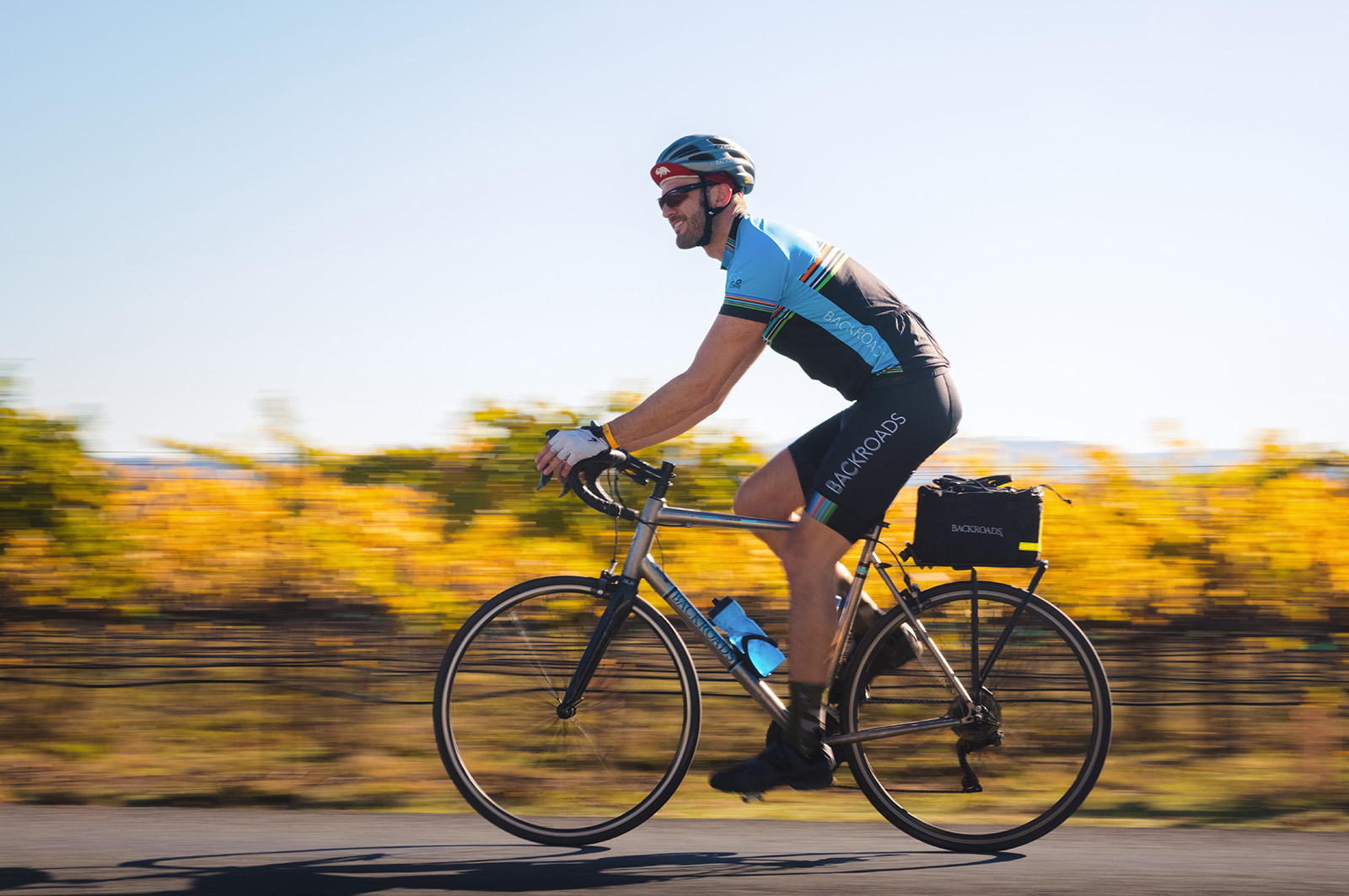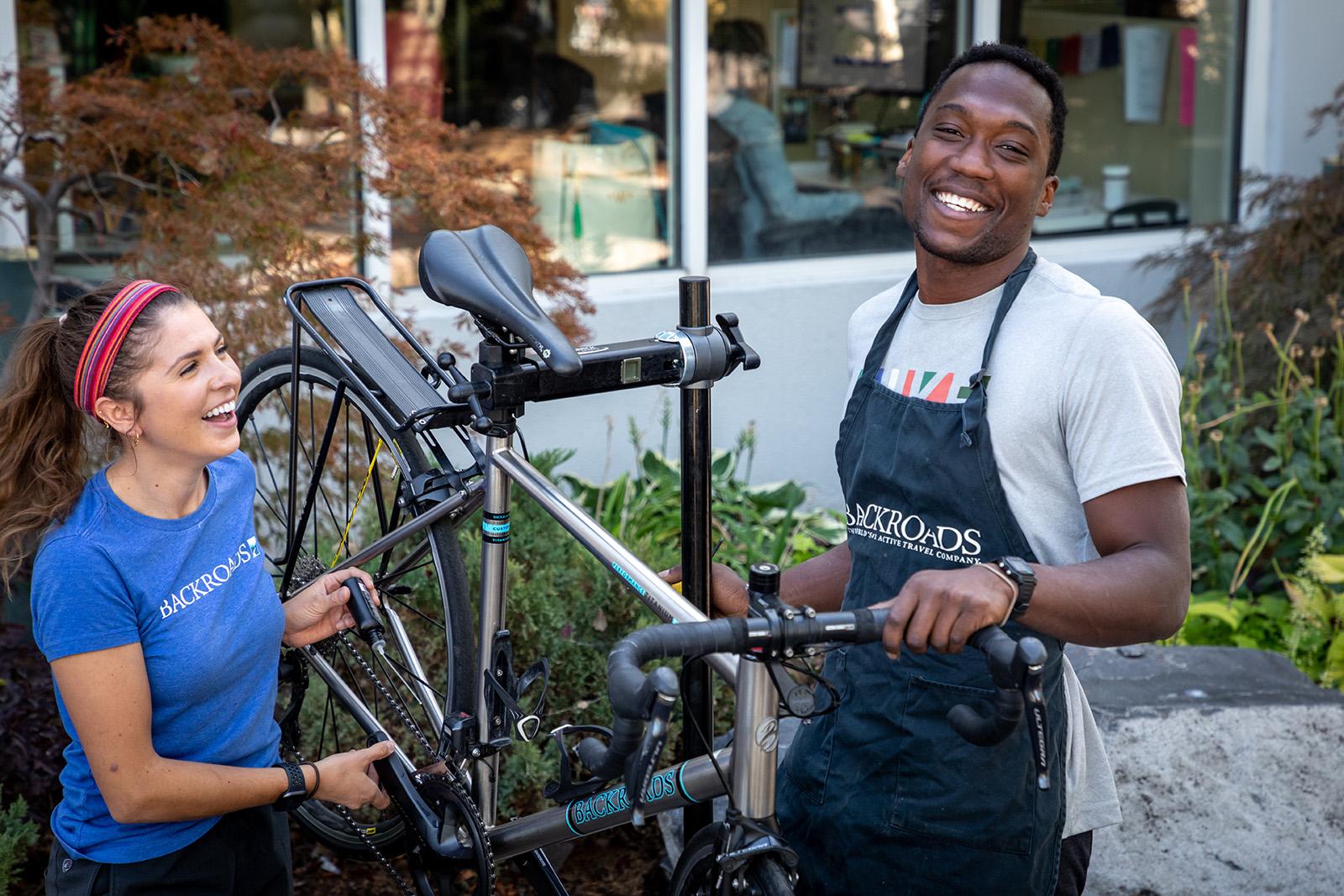Ever wonder what Backroads guests and Trip Leaders carry—or wear—on a bike ride? Read on for a behind-the-scenes look at how one leader, Jeremy Loewenstein, gears up for a day on the road and his tips for what to bring on a bike tour.
Here’s what I bring on trips that I suggest you consider packing:
Extra Layer: Cinched in the bungee on top of the trunk bag for easy access. Even a hot day can include some chilly miles—whether it’s from shade, a fast descent or a cool breeze off the water.
Rain Jacket: Also doubles as a wind-breaking outer layer. Large ‘pit zips’ keep me from overheating.
Sunblock & Lip Balm: By proactively protecting myself against the elements, I can keep my focus on our guests and the route ahead.
Sunglasses: To protect my eyes from the sun, debris—and bugs!
Cycling Shoes: I prefer cross-country shoes, which offer a blend of clipless, on-bike performance with reliable grip on hard surfaces for walking and racking bikes.
Thermal Bottoms, Gloves & Handwarmers: Rare for me as a native Michigander, but helpful for the occasional frigid day! Polyester or merino wool: These materials are lightweight, quick-drying, and moisture-wicking—perfect for a ride.
Padded Cycling Shorts: A pair with pockets gives me quick access to my phone, allowing me to keep in touch with my co-leaders throughout the ride. Buff: A thin ‘tube shaped’ microfiber for keeping my neck, face and ears warm during cool weather, and for sun protection when it’s warm.
As a leader, you’ll find me atop a Backroads Custom Performance Bike—the ultimate low-weight, high-capacity mount. The featherlight titanium frame, spacious trunk bag and dual bottle cages are a leader’s dream, allowing us to carry plenty of gear while keeping our overall weight low and maneuverability high. Typically, one bottle cage holds my water bottle while the other holds my ‘Tool Bottle.’ The Tool Bottle includes everything I need to make on-the-fly adjustments and repairs for our guests. From helping them dial into the perfect fit on their bikes to fixing flat tires or loose cables, our tools (and training) ensure we’re prepared to proactively and reactively handle anything the day throws at us.
Moving on to my trunk bag—the black bag behind my seat—I’ll usually store the following items:
First Aid Kit: Carried at all times, as safety is our number one priority. All of our leaders are trained in Basic First Aid and CPR as well.
Healthy Snacks: Backroads staples such as trail mix, dried fruit and bananas help sustain my energy throughout the ride.
Spare Bike Tubes & Hand Pump: While rare, flat tires can occur. I always keep spare tubes and a hand pump, just in case.
Paper Maps: Maps serve as a reliable backup to our GPS units. They’re also nice for jotting down notes such as points of interest, photo opportunities and easy turns to miss.
That’s all! You’re in great hands with our well-equipped, experienced and detail-oriented Trip Leaders—and now you can gear up like one, too!
Happy riding!














